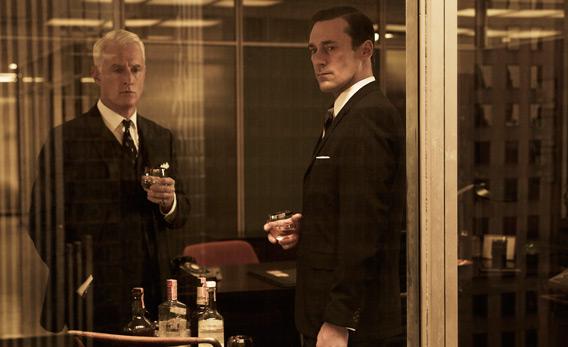In the latest issue of the New Yorker, Adam Gopnik tries to explain the popularity of Mad Men by announcing “the Golden 40-Year Rule.” “The prime site of nostalgia is always whatever happened, or is thought to have happened, in the decade between 40 and 50 years past,” he proclaims. As it happens, it was just over a week ago that Entertainment Weekly declared that “it typically takes about 12-15 years for the nostalgia life cycle to kick into effect.” Last fall, when the 20th anniversary of Nirvana’s Nevermind was widely observed in the press, music critic Carl Wilson was one of many writers who claimed that nostalgia runs on a “20-year cycle of resuscitation.” Kurt Andersen, meanwhile, commenting on the seeming omnipresence of nostalgia in American culture, suggested that we are at the mercy of “historical pendulum swings … that tend to last, according to historians, about 30 years.”
So which is it? Does the nostalgia cycle run on a 40-year cycle, a 20-year cycle, a 12-15 year cycle? Or are we prey to 30-year zigs and zags of the historical pendulum? Could there be sub-cycles? Gopnik also describes the presence of “epicycles” within the forty year cycle: “the twenty-year cycle, for instance, by which the forty-somethings recall their teen-age years.”
These proclamations have me nostalgic for a different time: The time, perhaps only imagined, before we all made sweeping statements about the life cycle of mass culture, based on convenient anecdotal evidence.
Gopnik, at least, attempts to support his claim at some length—even if that support, as written, consists mainly of a few cherry-picked examples. To take one case, Gopnik dates nostalgia for the ’60s to the ’00s, citing “’60s-pastiche rock bands” and noting that Arctic Monkeys’ Alex Turner sounds like John Lennon. But while the 2000s did see plenty of nostalgia for the 1960s, so did the 1990s, the 1980s, and the 1970s—i.e., every decade since the 1960s, which were formative years for rock ‘n’ roll. Indeed, nostalgia for that period began at least as early as 1973, when the golden-hued American Graffiti unexpectedly became a monster hit. Gopnik also mentions that the Rolling Stones and the Beach Boys set out on long arena tours in the 2000s, but he doesn’t mention any of the other big reunions and nostalgia tours of that decade, including—to cherry-pick a few examples of my own—A Tribe Called Quest (1990s), The Smashing Pumpkins (1990s), The Police (late 1970s and early 1980s), Bruce Springsteen and the E Street Band (1970s), and the Eagles (1970s). Similarly, while the article is prompted by the return of Mad Men, there’s no mention of fellow period dramas like Downton Abbey (1910s) and Boardwalk Empire (1920s)—both of which get comparable acclaim and sometimes even higher ratings.
I wouldn’t argue that that mass waves of nostalgia don’t occur; surely they do. But there’s no clear and fixed set of rules explaining when and why they occur. It might be comforting to think so; it would explain to us why, at any given moment, we seem to be living in the past. But American popular culture is too multifarious and inconstant to admit of such a simple explanation. Sometimes a show comes along that persuasively romanticizes the 1960s; sometimes an anniversary or two shines a light on music from 20 years ago most of us still love. But these flashpoints don’t follow any one pattern. Some cultural phenomena can’t be explained away by simple rules.
